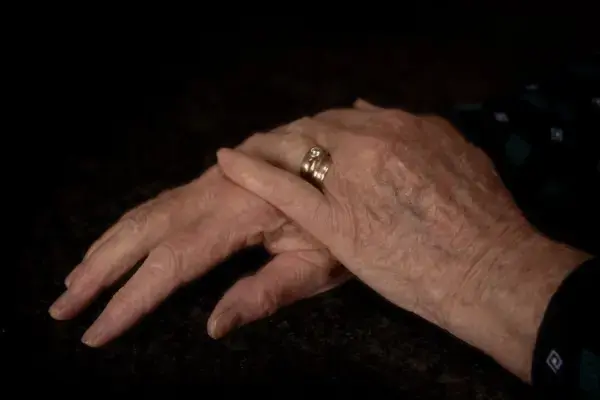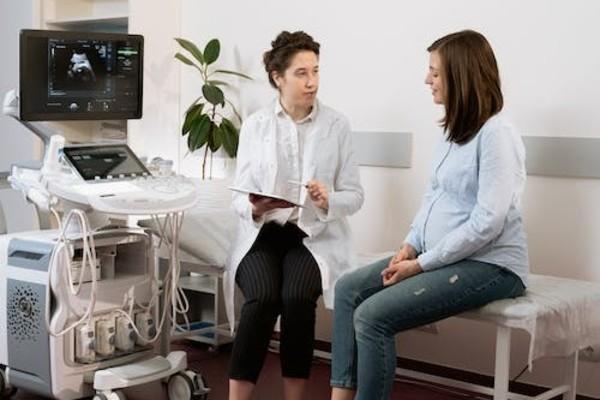
For Teachers & Professionals
Sexuality in Menopause
Menopause is a time that marks the end of one’s menstrual cycles. It is diagnosed after twelve months without a menstrual period. Menopause can happen between the 40s or 50s, but the average age is 51 in the United States. Menopause is a natural biological process, but the physical symptoms, such as hot flashes, and emotional symptoms of menopause may disrupt sleep, lower one’s energy or affect one’s emotional health. Other signs or symptoms are irregular periods, vaginal dryness, hot flashes, chills, night sweats, sleep problems, mood changes, weight gain and slowed metabolism, thinning hair and dry skin, and loss of breast fullness.
The menopausal transition, a time characterized by hormonal, physiological and social changes, is often associated with sexual dysfunction. Most menopausal women consider sex to be an important part of their life and they strongly desire to maintain a robust sexual life. Although sexual dissatisfaction and dysfunction are highly prevalent in perimenopausal and postmenopausal women, few disclose their concerns to the health care provider. Thus, health care providers should be proactive and routinely query perimenopausal and menopausal patients about their satisfaction with sex and their sexual functioning. Age-related declines in sexual function may significantly reduce the quality of life. Increased recognition by physicians and validation of patient concerns as well as expanded discussions about sexual dysfunction with patients may offer an opportunity for effective intervention and improve the quality of life for affected women.
Public opinion on the subject of sexual health in older people is characterised by plenty of stereotypes and prejudices. These stereotypes have their origin in the supposition that older people lack sexuality and the preconception that the nature of relationships among the elderly is monogamous and heterosexual. This is contrary to the state of knowledge confirming that sex is an integral part of people’s life irrespective of age.
The most common sexual problems in perimenopause are vaginal atrophy (a thinning vaginal wall and less vascularity and can lead to vaginal dryness and dyspareunia) and a decreased libido (that may depend on a complex of factors relating to stressors in life, which may include relationships, self-image, general health, and estrogen, progesterone, and testosterone levels). The prevalence rate of sexual dysfunction in postmenopausal women is reported to be about 50% in western societies. Undiagnosed or untreated sexual problems are associated with depression or social isolation, but still, few women report it.
Why?
1. Shame
Women may feel extremely embarrassed discussing their sexual issues with a health care provider. They are overly concerned about the confidentiality of medical information and consider sexuality a taboo, avoiding the topic stating that they ‘have a plan’ instead. Some are embarrassed to talk about strong feelings of sexual desire at old age, thinking it is time to withdraw from sexual relations instead because such relations are for the youth.
2. Consulting physicians in extremis
Patients refuse to seek help unless their condition becomes intolerable. Some women call a health provider when they are in extreme emotional pain or in case they are in tremendous physical pain such as severe uterine prolapse, vaginal atrophy or severe urinary infection.
3. Strict education and religious beliefs
Strict upbringing has a lifelong effect, which inhibits menopausal women from discussing their sexual concerns.
There are some religious rules such as if a doctor of the same gender were qualified to cure a patient then seeing a doctor of the opposite sex would not be allowed. Another religious law is that for which a woman can only be naked in front of her husband, and this serves as a powerful barrier to visiting a male doctor.
4. Individual beliefs
Some women consider menopause as a normal physiological process and this prevents them from seeking help and treatment, they believe in the ‘untreatable nature of the problem’. Menopausal women prefer to talk with a married or menopausal health provider instead of a young or single person as they believe that a married or menopausal health provider is more understanding of their condition.
5. Accessibility of services
Financial and geographical problems, physical problems, illiteracy, lack of knowledge about services and the absence of an individual to accompany them to the health office are among the barriers to access to healthcare services
Addressing and overcoming patients’ barriers can be a great first step in order to help these women. Many questions are often unasked because of embarrassment and/or lack of information. Difficulty in communicating with one's partner is often mirrored in the interaction with the physician. The physician models open communication by stating in a neutral tone that, for example, changes do occur during menopause, but that these in themselves are no reason not to continue to have an active sex life. If this does not cause the patient to begin to air her specific concerns, the doctor can provide examples. For instance: “Many women who have reached menopause have questions about sex. They may be concerned because they are not having very much sexual activity. They wonder if their partner has lost interest in them because they are ‘old and unattractive.’ Are there any issues that you would like to address?”
It might be appropriate to have the couple present for this discussion if your patient is comfortable with this. In this way, you can facilitate communication about a sensitive topic, and provide information. However, there may be an underlying relationship problem that is being highlighted at this point in the couple's life. Professional couple counselling should be considered and an appropriate referral made.
REFERENCES
Ghazanfarpour M., Khadivzadeh T., Roudsari R. L., Hazavehei S. M. M. (2017). Obstacles to the discussion of sexual problems in menopausal women: a qualitative study of healthcare providers, Journal of Obstetrics and Gynaecology, DOI: 10.1080/01443615.2017.1291598
Nathanson C, Allan S, Hou Liu N. (2014). Menopause: Time for a Change. Toronto, ON: Working With Families Institute.
Thornton, K.; Chervenak, J.; Neal-Perry, G. (2015). Menopause and Sexuality. Endocrinology and Metabolism Clinics of North America, 44(3), 649–661. doi:10.1016/j.ecl.2015.05.009
Share the knowledge!
More For Teachers & Professionals Q&A

Pre-school Students' Masturbation Behaviors, Teachers’ Attitudes and Early Childhood Education

Heteronormative Sexual Education and the Need for Sexual Education for Males who have Sex with Males

When the doctors talk about sexuality: what are the patient's reactions?

Parkinson’s disease and Sexuality

Emphatic Communication

Improving Communication With Sexual and Gender Minority Patients
This is a website that WE are building together. If you have a question there is no answer to on this site, send it here!
